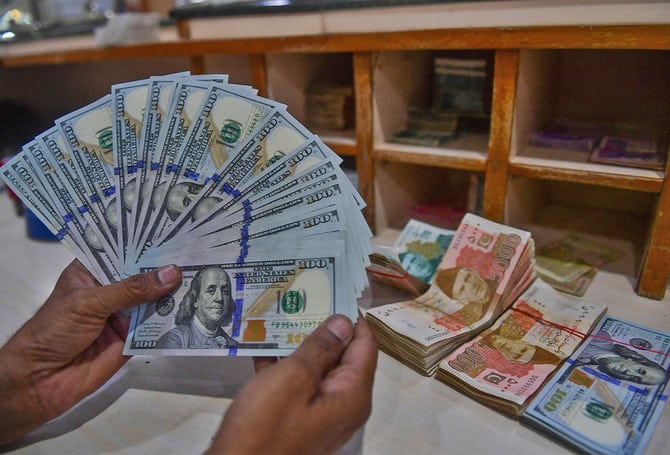A rigorous crackdown on illegal foreign exchange trading in Pakistan’s grey and black markets by security agencies has yielded significant results, leading to a surplus of up to $900 million in the open market. Currency dealers have reported that this surplus has been deposited in banks, marking a notable shift in the country’s currency dynamics.
As a direct consequence of this crackdown, the Pakistani rupee has experienced a remarkable appreciation of over 6.1 percent against the US dollar in September alone. This surge effectively nullified the losses the currency had incurred in August, making it the world’s best-performing currency for the month.
The journey to this turnaround began after Pakistan’s financial regulatory authorities and security agencies took decisive actions to curtail black market operations. This crackdown prompted a substantial inflow of tens of millions of dollars back into Pakistan’s interbank and open markets. It is estimated that approximately $800 to $900 million has been deposited in banks since the crackdown commenced in September.
Zafar Paracha, the General Secretary of the Exchange Companies Association of Pakistan (ECAP), highlighted that the daily average trading volume of exchange companies has grown significantly, from $5-$7 million to $50 million, directly resulting from the crackdown. Additionally, remittances processed through exchange companies have risen by 10 to 15 percent, with expectations of further increases through formal banking channels.
This development is particularly significant in the context of Pakistan’s economic stability, as the country had been facing challenges related to its foreign exchange reserves. A market-determined exchange rate is a crucial condition set by the International Monetary Fund (IMF) for Pakistan to receive a $3 billion bailout loan, which was agreed upon in July to avert a sovereign default. The significant improvement in currency dynamics could contribute positively to Pakistan’s economic stability and prospects.


